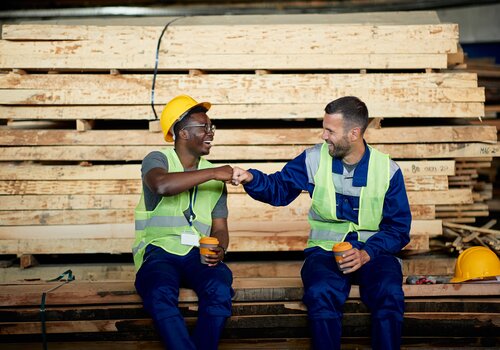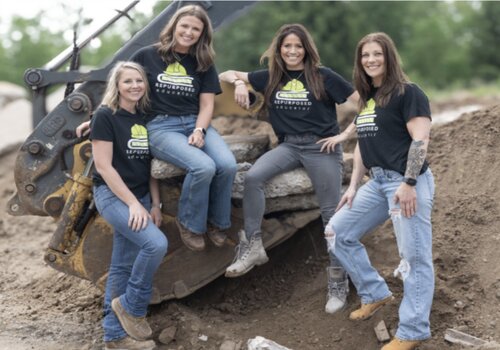Whether they’re performing the difficult work of debris removal and reconstruction, collecting supplies or simply writing a check, construction companies play a big role in helping local communities recover from disasters. And if forecasts prove correct, the 2025 hurricane season will provide several opportunities for the construction industry to step up.
2025 Storm Season
The National Oceanic and Atmospheric Administration is predicting an above-normal Atlantic hurricane season from June 1 to Nov. 30, with 13 to 19 total named storms. Of those, six to 10 are expected to become hurricanes, including three to five major hurricanes.
When a natural disaster strikes, the Federal Emergency Management Agency seeks out local businesses in the affected area to spearhead relief efforts. To become eligible for government contracts, FEMA advises construction companies to contact the National APEX Accelerator Alliance, a group of procurement-assistance professionals helping local businesses compete in the government marketplace.
There are more than 90 APEX Accelerator programs available through more than 300 local NAPEX offices across the country, and most services are free. Counselors will help construction executives understand the steps to getting government contracts and provide business guidance.
Steps to Starting the Contract
To do business with the federal government, construction companies must complete a free registration through the System for Award Management. While registering, companies can choose to participate in the Disaster Response Registry, a list of contractors available to remove debris, distribute supplies, begin reconstruction and provide other services. The registry is the primary resource for contracting officers seeking to procure supplies and services for affected areas.
Construction companies should submit a free Vendor Profile Form to inform FEMA of their capabilities or to request a meeting with a FEMA representative. Construction materials and equipment typically are among the most-needed items following a natural disaster, according to the agency, including plastic sheeting, tarps, forklift rentals, cargo vans, generators, office supplies and portable toilets.
FEMA doesn’t maintain a list of preferred vendors, so construction companies of any size may benefit from inclusion in the Disaster Response Registry. Additionally, companies that provide debris-removal services should register with the Corps of Engineers Contractor Registry since those services typically are contracted locally following a disaster, according to FEMA.
Further Disaster Relief Steps
Construction companies with expertise in disaster relief may want to join the Disaster Recovery Coalition of America, a nonprofit trade association representing contractors, emergency-management experts and executives from more than 15 industries. The Annandale, Va.-based group says its mission is to “unite the companies that restore roads, reopen businesses and reconnect communities” following disasters.
The DRCA is “committed to strengthening our nation’s ability to respond to and recover from disasters” by supporting local, state and national partners, according to Chairman Pete Gaynor, a former FEMA administrator now working for Hill International.
Helping the Community
If this hurricane season is anything like the last, then there will be plenty of examples of construction companies aiding victims. Last October, following Hurricanes Helene and Milton, MasterPlan Construction donated 100 solar generators to relief efforts along Florida’s Gulf Coast. The Orlando-based company also pledged to help businesses and homeowners restore their properties.
“We will mobilize building materials, furniture and engineering personnel to help more disaster-affected residents repair their homes as quickly as possible at prices below market rates,” President Jeff Xiao said in a statement. “Additionally, we will collaborate with nonprofit organizations to donate funds to support frontline responders … who are unable to prioritize their home repairs while assisting with disaster relief.”
Similarly, Warren-Lee Construction, based in Winchester, Va., collected essential supplies for victims of Hurricane Helene. The company sent more than two truckloads of nonperishable food, cleaning supplies, clothing, water, blankets, flashlights and pet food to communities in North Carolina that were hit especially hard.
Likewise, Luke Yoder, manager of Yoder Construction in Perry, Ga., assembled a team that drove up to North Carolina to donate 1,000 gallons of gas to power generators. They also brought chainsaws to help clear roads of debris and planned to serve meals to displaced residents. Through social media posts, Yoder raised more than $8,000 for supplies and gas.
The construction industry’s response to recent natural disasters has been generous and robust. The Home Depot Foundation, the charitable arm of the retail giant, donated $2 million and mobilized teams to deliver supplies following Hurricane Helene. Lowe’s offered free hurricane cleanup supplies at locations in Florida and Georgia, and almost 100 trained members of the company’s emergency-response team were dispatched to affected areas.
Meanwhile, ToolBank Disaster Services supplied tools and equipment to groups in Florida and had volunteers cleaning up communities across the Southeast. ToolBank is a national network that delivers trailers filled with tools to community-based organizations at no cost following disasters. Corporate sponsors include The Home Depot Foundation, Lowe’s, Stanley Black & Decker and Grainger.
This year already has seen a number of disasters strike the United States, including devastating wildfires in Southern California.
In February, following severe storms and flooding in Kentucky and other parts of the Southeast, Bobby Rayburn, former president of the National Association of Home Builders, urged construction companies to donate to the Home Building Industry Disaster Relief Fund. Since 2005, the nonprofit organization has donated more than $2 million to disaster relief.
“I’ve been proud to serve on the fund’s board over the last two decades,” Rayburn said. “I’ve seen an incredible amount of good work be completed across the nation. Together, we can help communities begin to heal.”
Be Ready Before the Storm Hits
Want to support your community and grow your business? Start by registering with FEMA’s Disaster Response Registry and connecting with your local Emergency response organizations.
For more insights, check out: 10 Tips for Creating A Disaster Preparedness Plan and 3 Steps to Creating Innovative Disaster Response Solutions.
👉 Share this article with your team or local partners to help build a more resilient response network.
Photo credit: SHUTTERSTOCK.COM/DMITRY SUROV












